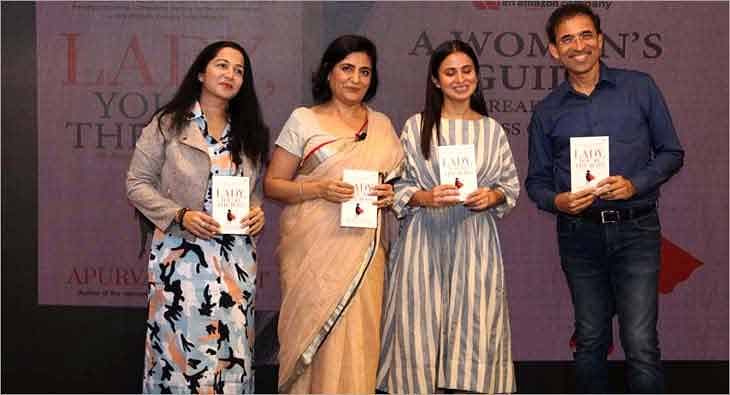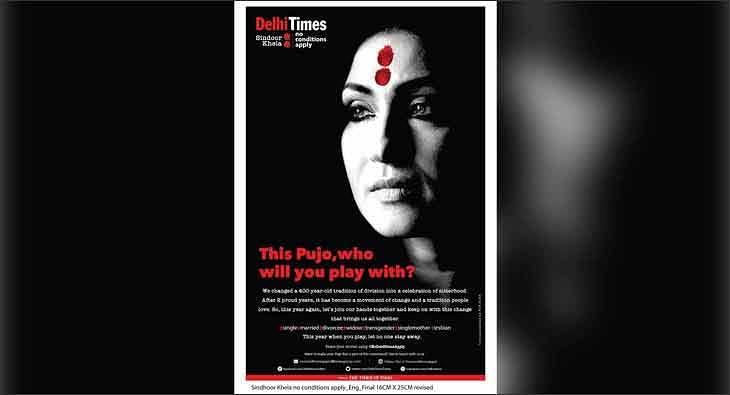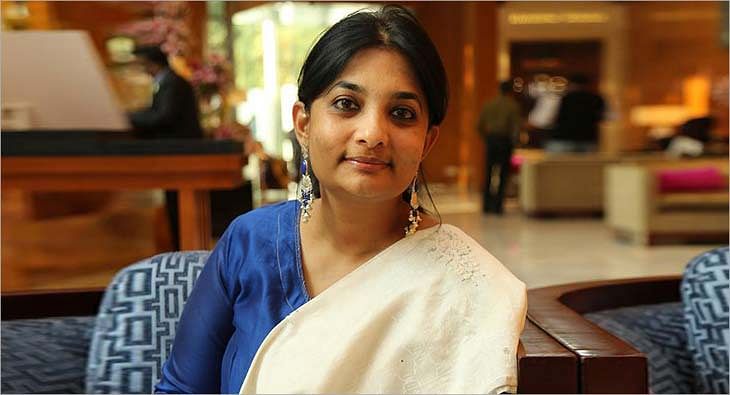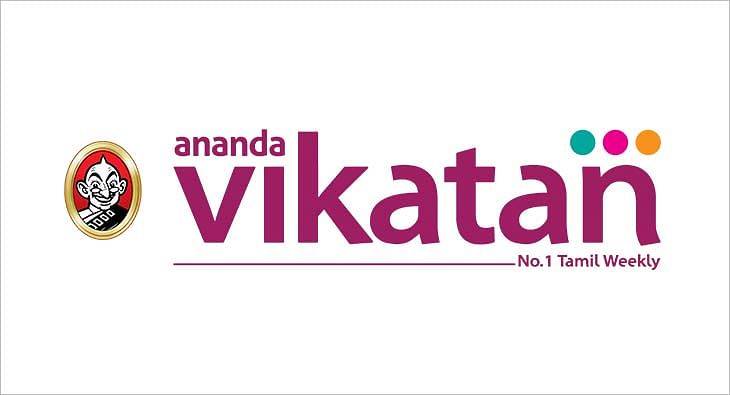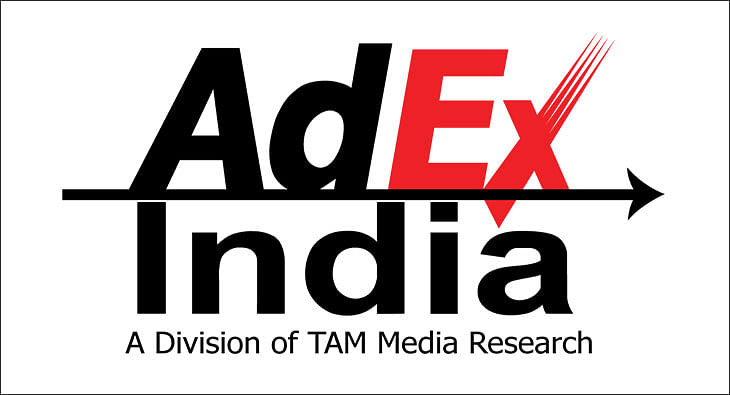INC 2008: The age of ‘My Newspaper’ – Of content, convergence and customisation
The first ever Indian Newspaper Congress, a joint initiative between Indian Newspaper Society and the exchange4media Group, saw a full house attendance from various stakeholders of the Indian print industry. The Congress, which was held in the Capital on May 16, ended with a high-powered session that saw CEOs of various organisations get together to discuss the threats and opportunities that newspapers face in a day and age when consumers would dictate what the editorial and the final product should be.

The first ever Indian Newspaper Congress, a joint initiative between Indian Newspaper Society and the exchange4media Group, saw a full house attendance from various stakeholders of the Indian print industry. Fun & Joy’s R L Bhatia was the host for the afternoon sessions on the day. The Congress ended with a high-powered session that saw CEOs of various organisations get together to discuss the threats and opportunities that newspapers face in a day and age when consumers would dictate what the editorial and the final product should be. The Session Chair was Pradeep Guha, CEO, Zee Entertainment Enterprises Ltd.
Three things that stood out in the session that aimed to predict trends in the newspaper environment were the focus on content than on “newspaper or news business”; the age of customisation, where the consumer may not be looking at just one brand for the news content that he needs but may be pooling content from different publications to create his own newspaper; and finally, the need for print to get its act right to identify the opportunities that the digital media offers, and capitalise on it now to truly move into the age of convergence.
Session Chair Guha was clear that e-papers or Internet offshoots that did not connect with the print version of the product were not steps towards the age of convergence. Before moving to the discussion, Guha took the audience through some points that he saw as threats, which if addressed in time, could convert into opportunities. He reminded the audience that newspapers had reinvented themselves two decades back when television was still a new medium and fast becoming a way of life. Newspapers then had embraced some of the core values of television and “yet remained true to their value”. Some of the steps that newspapers had taken at that time included going colour, adding the entertainment quotient and bringing in more infotainment.
The medium of tomorrow, according to Guha, was the Internet as it was able to tap on to some innate human needs. He added, “It would serve as well to identify the core value proposition of the Internet and get them in now. By definition, a convergence is when multiple products come together. The Internet and mobile today are convergence products.”
Guha further said that newspapers today had not moved in that direction and one reason for that could be that newspaper organisations’ feared losing their identity. Internet as a medium had recognised the core values of consumers and advertisers – whether it was in the form of fulfilling the integrated chain of consumer needs, and addressing the “consumer as a whole than some of its parts”, or in the form of catering to the integrated chain of advertiser needs, and being present in every step where the advertiser could communicate with his audience, and hence be delivered ‘purchase’.
Guha also brought in the measurement angle stating that as advertising costs went up, its effectiveness would be questioned, and that print media, too, should take the lead to invest time, money and energy to get more real-time data.
Digitally yours, but true convergence - not just yet
The panel comprised Rajiv Verma, CEO, Hindustan Times; Sarmad Ali, MD, Jung Group; Ashish Bagga, CEO, India Today Group; Ravi Dhariwal, President, Bennett, Coleman and Company Ltd; KU Rao, CEO, DNA; and Sanjay Gupta, CEO, Dainik Jagran.
The members on the panel did not completely agree with Guha on the need for action towards convergence and moving beyond e-papers. Perhaps the only one who agreed was Ashish Bagga. He explained that just as responsible people would make the necessary investments even for their grandchildren, responsible brand custodians and CEOs should take the right steps for their brands in context to a decade down the line. The time had come to truly embrace the internet age and making it an intrinsic part of a newspaper’s business model.
Presenting another set of views, Sanjay Gupta said, “The Internet is a challenge, but where does it get its content from? The Internet is just a medium like print and TV. As publishers, we need to see ourselves as content generators. Newspapers, by nature of the medium, cannot be an effective social networking tool. However, as companies, we can have different platforms that help people socially connect. Pizzas were not known in India a few years back, but they didn’t take over ‘daal roti’.” He added that today, there was information overload on the Internet, and readers looked to newspapers to take out the relevant content and deliver it to them.
Rajiv Verma compared India to the western markets and said that while they saw decline as a problem, it appeared that they were talking themselves into it. However, India was different. The total readership in the country was still on the rise, and sheer numbers showed that the potential for the newspaper business was still huge in India. “It stands true for the international level, too, otherwise why would Rupert Murdoch pay double the price to buy a Wall Street Journal? We are at a 10-year old start up for a 150-year old business.”
Ravi Dhariwal made no pretence of the fact that he was very bullish on the newspaper industry. “The newspaper decline is in the US and parts of Western Europe, and it is self-inflicted. They have worked in monopolies, looked for profits where there were none and haven’t worked in very conducive environments. Newspapers fit very nicely in the trends that we see today, and have a robust, bullish future.” Commenting on the changes in India, Dhariwal said that were consumers were increasingly spending more time on media, and newspapers would be smart enough to embrace the Internet in the right way. He spoke of the changing business models and added that he did not see too many barriers in the way of newspapers.
Bringing in views from across the border, Pakistan’s Sarmad Ali said that the biggest threat was in the mindset. Speaking on the need to redefine boundaries, Ali said, “There is no such thing as newspaper business or news business, we are in the media business. Six years ago, Jung branched out into TV and radio, and today, 45 per cent of our revenues are coming from TV. If you look at media consumption habits, 34 per cent of Pakistan’s ad expenditure is with us. The challenge and the opportunity is to keep that with portion with the Group, and that can be done by different mediums. But we have to ensure that consumers are consuming our brands.” Jung Publications was launched in Delhi in 1939 and then moved to Pakistan in 1947.
KU Rao stressed that India had to change culturally first, if the culture of the newspaper had to change. “India is such a young country, and the whole business is going to expand manifold. A Rs 3,000-crore company is not a huge company. The India of the future would see Rs 30,000 crore to Rs 50,000 crore companies. We are going to see a large cost base emerge that would fund this growth,” Rao said, adding, newspapers were still a great entertainment and information tool, and this would be the case for some time to come.
Ashish Bagga reminded the audience that nearly 30 per cent of the news in the metro market was consuming news on the digital medium, and that now was the time to sow the seeds to take the newspaper industry to its next level. “True, we are seeing growth in the industry, but it is a lesser percentage every year. We are increasing at a decreasing rate of growth and that is alarming. We have to wake up to the fact that the time to take new steps to ensure better return on investments and continue enjoying our audience’s trust is now.”
Bagga also spoke on growth from advertising revenues and that when the picture was seen in context to yields, growing at a given percentage was a challenge. He compared the picture to the new mediums, where the input cost was far lower. If the new age media model could be cracked, it would open a huge opportunity for the industry. He added that print wasn’t as dynamic as the newer mediums.
Newspaper business or content -- what is the core competence
Everyone in the panel was clear that content was the core competence of the newspaper industry. The big question then was that if content was what matters, then shouldn’t the consumer be choosing when and what he wants? Sanjay Gupta said that newspapers were content custodians, and to give the consumer the choice of when and what, a newspaper had to be simultaneously present on the Internet as well.
Ravi Dhariwal explained here that the question was not newspaper versus the Internet. “Newspapers would continue to be a vibrant media. There is a unique opportunity for people who look at other mediums to be able to package one’s offering for the consumer on the Internet. But that adds to the newspapers business, and not takes away from that,” he said.
Rajiv Verma spoke on the need to focus on future profit pools, as the reason why these businesses existed was to create shareholder value. “You have to deploy your resources in a pragmatic way, directionally, if you are in the newspaper organisation,” he said.
The move was towards branded content, Bagga said, adding, “As a consumer, I don’t have to go to one place for one thing. I can take some section from somewhere and create my own page – ‘my newspaper’ – depending on what suits me the best, fits in my time, and I trust, that is the way it would go in the future.”
The panel discussed further on the high-end consumers, who were the first ones to adopt new habits, and the most important ones for the advertisers. They also discussed on the competitive scenario in India. The concern there was that if the game continued to be about people with deep pockets doing well, would India move in the footsteps of markets like the US, where four large media houses controlled the entire market.
Read more news about (internet advertising India, internet advertising, advertising India, digital advertising India, media advertising India)
For more updates, be socially connected with us onInstagram, LinkedIn, Twitter, Facebook Youtube & Whatsapp
DNA to shut down Mumbai and Ahmedabad print editions
The publication said it will now be 'focussing on its online brand which has grown manifold in the digital space'
Daily News and Analysis (DNA) on Wednesday announced that it will be shutting down its print editions in Mumbai and Ahmedabad. In February this year, the Zee Media Group-owned English daily shut down the Delhi edition. The Pune and Bengaluru editions were shut in 2014.
Announcing the decision in an ad in the newspaper, it was said DNA will be focussing on its online brand which has grown “manifolds in the digital space”.
It said that its “readers especially the younger audience preferred reading on their mobile phones. “We thank each one of you for the print readership over the past 14 years. The print publication for Mumbai and Ahmedabad will be ceased effective 10th October 2019, Thursday till further notice,” read the announcement.

Talking about the development, a former editor of the newspaper shared, “They conducted a town hall meeting to update their existing employees about the news of shutdown.”
Read more news about (internet advertising India, internet advertising, advertising India, digital advertising India, media advertising India)
For more updates, be socially connected with us onInstagram, LinkedIn, Twitter, Facebook Youtube & Whatsapp
I hope my book helps women maximise their potential: Apurva Purohit
Purohit, President, Jagran Prakashan, launched her new book 'Lady You’re the Boss' at an exclusive gathering attended by Madhukar Kamath, Shashi Sinha and Saugata Gupta, among others
Apurva Purohit, President, Jagran Prakashan, launched her new book 'Lady You’re the Boss' at an exclusive gathering of industry bigwigs and friends at the Arth Lounge in Khar, Mumbai on September 26. The book follows Purohit's very successful first book, 'Lady, You’re not a Man – The Adventures of a Woman at Work', which is in its 21st edition now.
Published by Westland Publications, an Amazon company, 'Lady You're the Boss' draws from Purohit’s personal experiences and lays down a plan of action for women to persevere and reclaim their true potential, without minimizing themselves in any way.
It addresses the process of working women transitioning from mid-management to senior leadership roles and aims to empower women across sectors and organizations, encouraging them to work their way to the corner office, consciously defeating those internal and external biases that stop many a working woman from chasing her dreams.
Actor Divya Dutta, cricket commentator Harsha Bhogle and Purohit herself read out chapters from the book at the event while Karthika VK of Westland Publications spoke of the experience of publishing the book.
Talking about the book, Saugata Gupta, MD and CEO, Marico, who was present at the launch, said, “We are very lucky that there are many women in the Indian corporate world who can break the glass ceiling. This book will be an interesting read. I have a daughter who’s very achievement-oriented too and I always encourage diversity in the workplace."
“I’m really looking forward to reading this book, going by the excerpts Apurva and the rest have read out today. Most importantly, it’s not pretentious, but sounds like something that would inspire everyone," said Abhijit Avasthi, Co-founder, Sideways.
Thanking the audience present at the launch, Purohit said, “I really appreciate that all my friends, colleagues and family are present here. Thanks also to my wonderful team. I’m hoping that this book will help all kinds of women realise their worth. When young girls grow up, they don’t know how to stand up because they sometimes feel incompetent. I’m hoping that 'Lady You’re the Boss' will help women maximise their potential and live up to all the dreams they’ve had.”
Madhukar Kamath, Emeritus, DDB Mudra, Shalini Kamath of SK & Associates, Vivek Sharma and Bharat Puri of Pidilite Industries, Shashi Sinha of IPG Mediabrands India, Ramesh Narayan of IAA, Pawan Bansal of Jagran Engage, Kartik Kalla of Radio City, Joe Thaliath of FCB Interface, Anil Viswanathan of Mondelez Foods India and Sanjay Purohit, Group CEO, Sapphire Foods (who is married to Apurva Purohit) were among those present at the event.
Read more news about (internet advertising India, internet advertising, advertising India, digital advertising India, media advertising India)
For more updates, be socially connected with us onInstagram, LinkedIn, Twitter, Facebook Youtube & Whatsapp
TOI announces 3rd edition of #NoConditionsApply – Sindoor Khela campaign
Conceptualized to promote gender equality, the campaign calls for inclusion of women in celebrations and combats discrimination they face in terms of caste, marital status and sexual orientation
Two years ago, an initiative by The Times of India reinterpreted a 400-year-old tradition with the award-winning campaign #NoConditionsApply – Sindoor Khela. Conceptualized to promote gender equality, the campaign calls attention to the issue of inclusion of women in celebrations and combats the discrimination that they face in terms of their caste, creed, marital status, sexual orientation etc. The campaign won accolades in India and abroad.
In its 3rd year, #NoConditionsApply – Sindoor Khela initiative aims to reach the corners of the nation and beyond spreading this message of inclusive celebration that celebrates womanhood sans any discrimination based on ‘labels’ and societal barriers.
The campaign that was conceptualized in 2017 and was organized for one pandal in Kolkata. The Times of India along with the puja committee of Tridhara Sammilani, which is also one of the oldest and most prestigious puja pandals in Kolkata, organized the first ever inclusive Sindoor Khela – which invited widows and transgenders to be a part of this grand celebration.
What started with a single pandal celebration, went on to become a national movement with participation from over 100 pandals in 2018. The campaign hopes the movement will achieve the status of a global phenomenon this year. Owing to the widespread popularity of the campaign in its previous two editions, TOI has been getting several requests of extending the campaign to newer cities.
This year, the campaign spreads its wings across the country and beyond, and #NoConditionsApply encourages readers to host an inclusive Sindoor Khela and celebrate along with all sisters irrespective of the labels society may have attached to them.
The campaign urges patrons to bring a sister along to the celebration – sister being used metaphorically for any women they know of in their family, friend and neighbourhood, who have been shunned to be a part of the celebration.
The campaign asks the patron to invite their lesbian sister, transgender sister, widowed sister, divorcee sister, single mother sister to the celebrations this year. Since its inception, the campaign has witnessed phenomenal support worldwide from people who wanted to offer their support and be a part of the movement.
Garnering support from Kolkata’s agents of change - Rituparna Sengupta, Gargee Roychowdhury, Manobi Bandyopadhyay and Sohini Sengupta the campaign extends an invitation to women to #BringaSisterAlong this Pujo. With the phenomenal success of its previous editions, garnering 718 mn reach over the past 2 years, the latest edition aims to extend inclusion not just in Sindoor Khela but across all celebrations as part of the fabric of our tradition.
Commenting on the launch, Sanjeev Bhargava, Director, Brand TOI, said, “The #NoConditionsApply – Sindoor Khela campaign is extremely special to all of us, owing to the change that it has fostered across the various communities in India. While it is contextualized to a Bengali cultural event, the message of inclusive celebration and sisterhood resonates with everyone. We have always left no stone unturned in spreading the message across the various strata of society. Our success lies not in the awards that this campaign has garnered but in the fact that the initiative has grown from strength to strength and is rapidly becoming a symbol of inclusiveness. We are grateful for the overwhelming response we have received from women across the country who have shared their celebrations with us. The fact that it is back for the third time is testament to the widespread movement that the campaign is now. I thank everyone who has supported us in making the change happen.”
Speaking about the campaign, Swati Bhattacharya, Chief Creative Officer, FCB Ulka said, “This piece of work has been a big emotional milestone for me personally. This bloodless coup of a campaign shows the world that joy love friendship and beauty can help break down walls an inclusive Sindoor Khela shows us that sisterhood is one of biggest ideas that can change the world we live in.”
Read more news about (internet advertising India, internet advertising, advertising India, digital advertising India, media advertising India)
For more updates, be socially connected with us onInstagram, LinkedIn, Twitter, Facebook Youtube & Whatsapp
We’re aggressively driving partnerships across the ecosystem: Archana Anand, ZEE5 Global
Anand, Chief Business Officer, ZEE5 Global, tells us about the platform's partnership with Google and the markets the brand is most upbeat about
From being one of the most downloaded OTT apps in places like Bangladesh and Sri Lanka to curating content especially for the global audience, ZEE5 is upbeat about their global roadmap. Archana Anand, Chief Business Officer at ZEE5 Global talks about the markets the brand is most upbeat about. ZEE5 also brought Google on board to help them achieve maximum reach globally. Google did a thorough market analysis of the audiences interested in the content that was owned and created by ZEE.
ZEE5 seems to have ranked as the No 1 entertainment app in key markets within weeks of its launch. Can you please elaborate on the markets?
Bangladesh and Sri Lanka were among the key SAARC markets where we galloped to the No 1 position, that too within a few weeks of launch. We launched ZEE5 across 190+ markets in Oct 2018 and rolled out our marketing campaign a few weeks later in Jan 2019 across select markets in APAC. Our immediate priority was to establish ourselves firmly as the largest and most comprehensive destination for Indian entertainment, especially in SAARC countries where our content has the highest direct affinity. We used inputs from local market specialists and extensive market insights to create very specifically targeted media campaigns basis for various benchmarks to achieve quick market penetration with rapid awareness and usage. All this and more resulted in ZEE5 becoming the No. 1 entertainment app across key markets in SAARC including Bangladesh and Sri Lanka within just a few weeks of launch, and now we look to replicate this success story across other markets soon too.
You are also one of the first OTT platforms from India to customize Indian content for global audiences? Tell us about the markets you are upbeat about? What is the kind of content you are curating for the global audience?
As we deepened our presence across international markets, we realized that the huge love for Bollywood and Indian TV Shows is not restricted to Indians or even South Asians abroad, but is also huge among mainstream audiences. This was also supported by the insights from our local linear channel teams. Therefore, in April 2019, we launched a range of Indian content including Bollywood movies dubbed across 5 international languages, Bahasa Malay, Thai, Indo Bahasa, German and Russian, expanding our target audience beyond South Asians to mainstream audiences too across these markets, and while its early days, we are seeing a great response.
Any particular reason why Middle East is a strong market and you have done so many associations there?
The Middle East is a very exciting market for us as there is a huge Indian and South Asian community there which is already familiar with and loves our content across languages like Hindi, Malayalam, Tamil, Bengali, and others. We have a strong bouquet of content that’s striking a chord among the South Indian community in the market. There’s also a huge demand for Bollywood movies in the Middle East among local audiences too and our catalogue of 2000+ movies as well as our Originals, many of which have Bollywood stars, caters superbly to that demand. Our recent launches like Uri, Simmba, and Kedarnath among others have done really well as have our Originals like Kaafir, The Final Call, and Poison etc, n fact the Middle East was the first of the three markets that we kicked off our new campaign ‘Full On Entertainment’ in, through various on-ground events. Our recent partnerships with Eurostar and the LuLu Group are only the first of many and we have some very key telco partnerships also in the pipeline.
You have also roped in Google as a consulting partner to build their global strategy and execution plan. Tell us more about the partnership. What exactly would be Google’s role?
Launching globally across 190 countries required an in-depth understanding of the digital audiences across the markets, especially the far-flung ones. Prioritizing our key markets to ensure that we drive clear wins out of them was going to be an important task at hand for us and Google was the obvious choice for us to partner with for our global rollout. As a consulting partner, Google did a thorough market analysis of the audiences interested in the content that was owned and created by ZEE and that threw up some very key insights. Those, along with inputs from local market specialists and our own business teams were used to create media plans and strategies basis the benchmarks.
Every OTT platform now also has telecom partners, while we know you have partnerships with Airtel in India do you have any such tie-ups with international players too since you are aggressively promoting your platform globally?
Absolutely - we’re very aggressively driving partnerships across the ecosystem. Since our launch in October 2018, we have built out a slew of strategic partnerships in every key market like Dialog in Sri Lanka, Celcom in Malaysia, Robi Axiata in Bangladesh and others. We’ve also partnered with Apigate for multiple markets, and with Zeasn and Netrange for their Smart TV range. We’re also building out a strong offline presence in key markets like the Middle East with our partnerships with key retailers like the LuLu Group and Eurostar. We have multiple partnership announcements also coming up over the next several weeks including our first in Australia.
Read more news about (internet advertising India, internet advertising, advertising India, digital advertising India, media advertising India)
For more updates, be socially connected with us onInstagram, LinkedIn, Twitter, Facebook Youtube & Whatsapp
Vikatan Group revamps print portfolio
As part of its restructuring exercise, the print bouquet has been realigned as core magazines and special interest magazines
As part of its restructuring exercise, the Vikatan group has revamped its print portfolio with a sharper focus towards its content reorientation. The print bouquet has been realigned as core magazines and special interest magazines.
The core magazine bouquet consists of the 93-year-old ‘Ananda Vikatan’, weekly magazine in Tamil, which has a Total Readership (TR) of 33.94 Lakhs (IRS 2019, Q2); ‘Aval Vikatan’, fortnightly women’s Tamil magazine, with readership (TR) of 13.26 Lakh (IRS 2019, Q2); and ‘Junior Vikatan’, bi-weekly, Tamil Socio-political magazine.
The special interest magazine bouquet includes, ‘Nanayam Vikatan’, (TR of 3.46 Lakh / IRS 2019Q2), a personal finance & entrepreneurship magazine; ‘Pasumai Vikatan’, (TR of 8.55 Lakh / IRS 2019Q2), a magazine devoted & focussed to the organic farming and inclusive farm practices; ‘Motor Vikatan’, (TR 3.72 Lakh / IRS 2019Q2), auto magazine in Tamil; ‘Sakthi Vikatan’, (TR of 4.88 Lakh / IRS 2019, Q2), the spiritual magazine about the religious culture and heritage of the land, and ‘Aval kitchen’, the brand extension of ‘Aval Vikatan’ Magazine focusing on food, recipe and kitchen.
In the process, two of its print titles, ‘Vikatan Thadam’ & ‘Doctor’ Vikatan has been shelved from September 2019, while ‘Aval Manamagal’, the quarterly bridal magazine has been converted as an advertiser driven publication in the B2B route and ‘Chutti Vikatan’, the children’s magazine will take a completely new format to directly engage with schools and children.
Their content on literature, health & wellness, bridal fashion & shopping, and children-focussed content will be seamlessly integrated in print & digital platforms.
“After immense deliberations on content and market acceptability, we have restructured our print portfolio and two titles have been shelved and amongst two others, ‘Aval Manamagal’ has been migrated to AFP model, while ‘Chutti Vikatan’ has been contextualized to the children & school ecosystem” said, B Srinivasan, Managing Director, Vikatan Group, “The content will be seamlessly integrated with the rest of the magazines. Vikatan management remains fully committed to all other group magazines.”

Read more news about (internet advertising India, internet advertising, advertising India, digital advertising India, media advertising India)
For more updates, be socially connected with us onInstagram, LinkedIn, Twitter, Facebook Youtube & Whatsapp
Print sees 8% rise in ad volume in Q2 2019 compared to Q1 2019: TAM Adex
There has been a 15% rise in ad volume from the Education sector in Q2 2019
While there has been an 8% indexed growth from Q1 to Q 2 2019 in the Print medium, it’s the Education sector that has increased its share dramatically as per TAM Adex data. From 11% in the first quarter, the sector has managed to increase its share of ad volumes to 26% in the second quarter. However, Auto declined to 13% from 17% while Services went down from 18% to 14%.
If we compare the first half of 2018 to the first half of 2019, Education has managed to take the top spot in both the years. Although the shares went down by 1% from 2018 to 2019, it is still the top sector. Auto gained 1% more share bringing it to 16% from 15% in 2018. Ad volumes have dropped considerably from H1 2018 to H1 2019 by 6%. All other sectors have gone down by 1%.
Allen Career Institute and Aakash Medical College Maruti Car range, Hero Two-wheelers, Indira Infertility & Test Tube Baby Centre and Homecare International are the major brands in the first half of this year. However, the overall indexed growth of ad volumes has fallen by 7% in the first half of 2019 compared to H1 2018.
Read more news about (internet advertising India, internet advertising, advertising India, digital advertising India, media advertising India)
For more updates, be socially connected with us onInstagram, LinkedIn, Twitter, Facebook Youtube & Whatsapp
Delhi High Court restrains publication of defamatory content against EbixCash by Viceroy
The Court issued a dynamic injunction restraining publication or republication of certain defamatory articles against EbixCash by US-based Viceroy Research Group
The Delhi High Court has issued a dynamic injunction order restraining publication or republication of the contents of certain defamatory articles against EbixCash and Ebix (Nasdaq:Ebix), by US- based Viceroy Research Group, Fraser Perring and other principals of Viceroy.
The court also directed the Times Group's ET Prime, to take down an article published July 31, 2019, since the article was largely based on statements made by Viceroy. The order also directed all the defendants including Viceroy, Fraser and all its principals not to publish any such content themselves or through their affiliates or agents or any other person acting on their behalf.
The issuance of a dynamic injunction by the Delhi High court is to be specially noted as a it implies that the next time any media or publication quotes Viceroy or Fraser or any of the contents of the banned piece by Delhi High court - “Goodwill hunting”; EbixCash will not need to approach the judge but just to reach out to the Registrar of court for taking down any such new article.
Delhi High Court had earlier issued an order on 8th May 2019, directing Twitter and Google to take down certain articles published by Viceroy Research Group.
In May 2019, EbixCash had approached the High Court with a plea that Viceroy Research Group had published certain articles on its website which contained defamatory information about the former. EbixCash had alleged that Viceroy Research, which holds “short selling” positions in the company and its sister concerns, was using these defamatory articles to drive down the price of the company, and thereby making profit from it.
Read more news about (internet advertising India, internet advertising, advertising India, digital advertising India, media advertising India)
For more updates, be socially connected with us onInstagram, LinkedIn, Twitter, Facebook Youtube & Whatsapp














 Share
Share